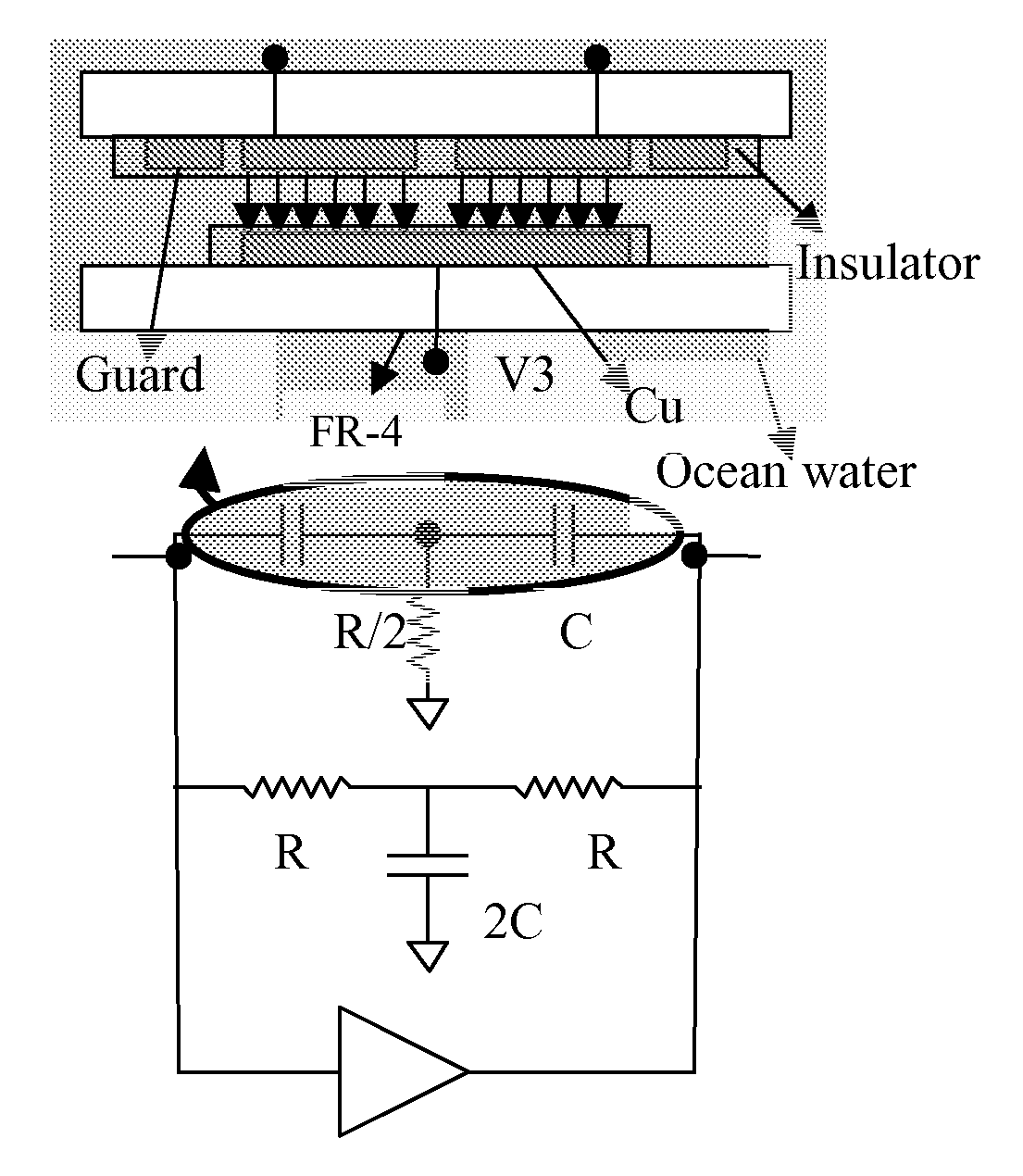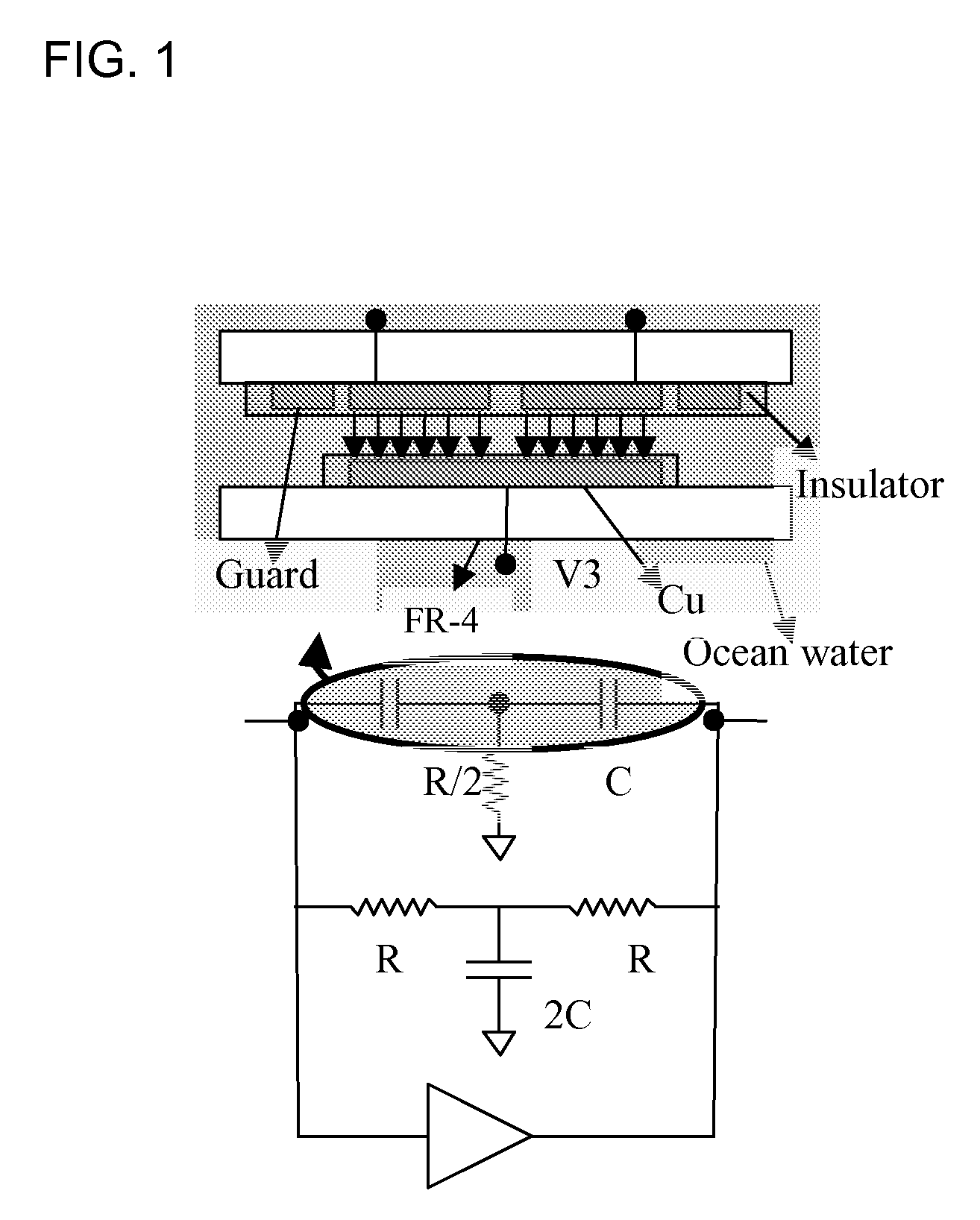MEMS Based Conductivity-Temperature-Depth Sensor for Harsh Oceanic Environment
a technology of conductivity and temperature depth, applied in the direction of instruments, heat measurement, reradiation, etc., can solve the problems of increasing the number of support vessels, adding a significant cost, and both have limitations
- Summary
- Abstract
- Description
- Claims
- Application Information
AI Technical Summary
Benefits of technology
Problems solved by technology
Method used
Image
Examples
Embodiment Construction
[0027] The all-silicon MEMS multi sensor consists of a capacitive based conductivity sensor, a gold doped temperature sensor and bulk micromachined piezoresistive pressure / depth sensor. These sensors are capable of operating over a wide dynamic range (0-500 m) with a resolution better than 1%. The advantages of using MEMS based silicon sensors are: 1) negligible creep and fatigue from hysterisis, 2) capable of integration and batch fabrication and 3) easily interface to electronic circuits.
[0028] A. Conductivity Sensor
[0029] Conventional conductivity sensors consist of toroidal coils for measurements. An inherent drawback of such system is the external field. A significant portion of the measuring field is external to the device and hence, any particle / field in the vicinity of the device tends to alter the measuring field resulting in measurement errors. The problem of external fields can be overcome by making use of a parallel two plate arrangement where the test specimen (ocean ...
PUM
 Login to View More
Login to View More Abstract
Description
Claims
Application Information
 Login to View More
Login to View More - R&D
- Intellectual Property
- Life Sciences
- Materials
- Tech Scout
- Unparalleled Data Quality
- Higher Quality Content
- 60% Fewer Hallucinations
Browse by: Latest US Patents, China's latest patents, Technical Efficacy Thesaurus, Application Domain, Technology Topic, Popular Technical Reports.
© 2025 PatSnap. All rights reserved.Legal|Privacy policy|Modern Slavery Act Transparency Statement|Sitemap|About US| Contact US: help@patsnap.com



